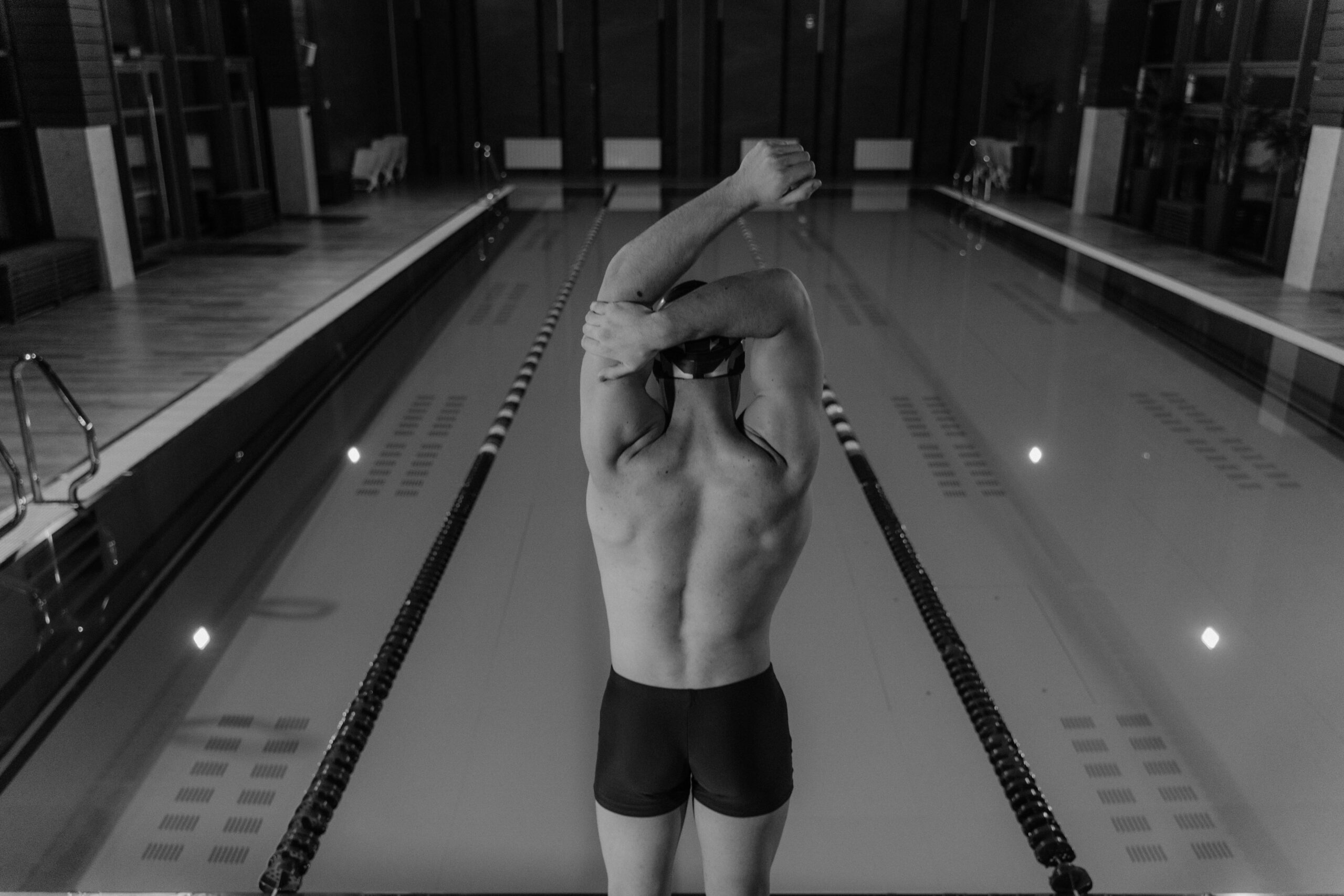The older we get, the more important it is to keep in shape. Swimming is an excellent option for seniors who want low-impact exercise! It also helps with the latter two problems and is good for your heart. This guide will discuss the benefits of swimming to senior health, independence, and quality of life.
Key Takeaways
- Swimming is a low-impact exercise that is gentle on the joints, making it an ideal choice for seniors.
- Engaging in regular swimming can improve cardiovascular health and boost overall fitness levels.
- Swimming can help alleviate the symptoms of arthritis and other joint-related conditions.
- Aquatic therapy and water aerobics are effective ways for seniors to stay active and improve their physical well-being.
- Incorporating swimming into a senior’s fitness routine can enhance their independence and quality of life.
Introduction
We need to try to stay active as we age. Many exercises are difficult or too dangerous for seniors. Balance and resistance training with buoyancy is the only exercise that can make a 90-year-old feel like they are walking on land.
Water helps to cushion our bodies, taking pressure away from some of our joints. This makes swimming ideal for elderly people who have difficulty doing other exercises. Senior water aerobics and aquatic therapy exercises for older adults and senior swimming enhance strength, flexibility, and heart health. They also lower injury risks.
In this article, we will list some ways seniors can benefit from swimming and give tips on senior-friendly exercises. Swimming is the perfect exercise for everyone, from beginners to advanced swimmers, and it will help get/keep you in great shape. Abs definitely makes a fun activity!
Benefits of Swimming for Seniors
Swimming is one of the best low-impact exercises for senior adults. This gentle activity is easy on the body and ideal for active aging.
Low-Impact Exercise
Swimming is an activity that does not put a lot of strain on your joints. It promotes strength, flexibility, and cardiovascular health. Particularly beneficial for people with arthritis, it is gentler on the body.
Improves Cardiovascular Health
Swimming Is Heart-Healthy In Seniors Promoter of heart health and blood circulation support to help reduce the risk for high BP and CVD in addition to boosting stamina
Swimming is also valuable for maintaining physical function and independence as we age. This is an anti-aging exercise that will extend quality years to your life.
Swimming Exercises for the Elderly
Swimming and aquatic exercises are great for seniors looking for a low-impact workout. They help reduce joint pain and boost heart health. Many aquatic exercises, from easy lap swimming to fun water aerobics, are designed for older adults.
Water aerobics is a favorite. It uses the water’s support for movements that improve flexibility, balance, and muscle strength. It’s perfect for those with arthritis or mobility issues, offering a low-impact way to stay active.
Lap swimming is another great choice. It’s a gentle way to strengthen the heart and avoid injuries. Swimming at the right pace can increase endurance, muscle tone, and fitness without the impact of land exercises.
Aquatic Therapy for Older Adults
Some seniors might also benefit from aquatic therapy with professional guidance. These sessions use specific exercises, balance training, and hydrotherapy to meet individual needs, like managing joint pain or recovering from injuries.
| Aquatic Exercise | Benefits for Seniors |
|---|---|
| Water Aerobics | Improved flexibility, balance, and muscle strength |
| Lap Swimming | Enhanced cardiovascular health and endurance |
| Aquatic Therapy | Targeted exercises, balance training, and hydrotherapy |
Seniors can stay fit and feel better by trying different aquatic exercises for joint pain management and water aerobics for the aging population. These activities help them live a more active and enjoyable life.
Low-Impact Workouts for Seniors
Seniors with joint pain, arthritis, or mobility issues find relief in low-impact workouts. Aquatic therapy and senior fitness swimming are great options. The water’s buoyancy reduces joint pressure, making movement easier and less painful.
Aquatic Therapy for Older Adults
Aquatic therapy uses water’s healing properties to fight inflammation and boost circulation. It helps seniors stay well. In the water, exercises that hurt on land become possible, improving flexibility and strength.
Senior Fitness Swimming
Swimming is perfect for seniors wanting to stay active. It’s a low-impact way to boost fitness. Regular swimming for arthritis relief or hydrotherapy benefits for retirees improves heart health and muscle tone, helping seniors stay independent.
| Aquatic Therapy | Senior Fitness Swimming |
|---|---|
| Reduces joint pain and inflammation | Improves cardiovascular health |
| Enhances flexibility and balance | Builds muscle strength and tone |
| Promotes overall wellness | Maintains independence and mobility |
Swimming for Arthritis Relief
Swimming can change the game for seniors with arthritis. The water’s buoyancy eases joint pressure. It also offers a gentle way to stay active and manage symptoms.
Water-based activities like water aerobics for the aging population are especially good. They mix the water’s healing effects with the benefits of aerobic exercise.
Being in the water can ease joint pain and stiffness. This lets seniors move more easily and improve their flexibility. The water’s resistance also strengthens the muscles around the joints, offering more support.
Aquatic exercises for arthritis can vary. They range from gentle water walking to dynamic water aerobics routines. The main benefits are less joint strain, better flexibility, and improved well-being.
“Swimming and water-based exercises are often recommended as the primary forms of physical activity for seniors with arthritis. The low-impact nature of these activities allows individuals to stay active without further aggravating their joint pain and stiffness.”
For older adults with arthritis, adding water aerobics for the aging population to their routine can be transformative. It lets them stay active, enhance their quality of life, and manage their symptoms effectively.
Water Aerobics for the Aging Population
As people age, staying active and healthy is key. Water aerobics is a popular choice for seniors. It’s a low-impact workout that offers many benefits.
Hydrotherapy Benefits for Retirees
Hydrotherapy uses water to help retirees feel better. Water’s buoyancy eases the pressure on joints and muscles. This makes it great for those with mobility issues or joint pain.
Water aerobics is also a form of aquatic therapy for older adults. It helps with arthritis, osteoporosis, and chronic pain. Water’s soothing effects improve circulation and reduce inflammation.
Swimming is a powerful way for seniors to stay young. Water aerobics is a low-impact workout that boosts heart health and muscle tone and reduces injury risks.
| Benefits of Water Aerobics for Seniors | Impact on Overall Health |
|---|---|
| Improved cardiovascular fitness Increased muscle strength and endurance Enhanced flexibility and range of motion Reduced joint pain and stress Improved balance and coordination | Increased independence and mobility Reduced risk of falls and injuries Better management of chronic conditions Improved mental well-being and mood Prolonged healthy and active aging |
Water aerobics is becoming more popular among seniors. It’s a low-impact, therapeutic exercise. It offers physical and mental health benefits, helping seniors stay active and independent.
Conclusion
#Swimming and water activities for seniors. They Enable Us To Have A Body And Mind Fit For Our Years Of Retirement, Good for heart health, less impact/joint pain than many other exercises (running), and cardiovascular fitness.
For seniors who want to maintain a healthy lifestyle long into their golden years, swimming is an important exercise that they can use. It also allows them to live more as they grow old. If all of the benefits that swimming provides for seniors, it is no wonder that more and older people are looking to spend these golden years with energy, health, and strength.
Aquatic therapy, water aerobics, and swimming for fun are all things seniors can do in the pool. It is a very accommodating way to remain healthy and better off. It provides an opportunity for older adults to connect, explore, and grow.
FAQ
What are the benefits of swimming for seniors?
It is also low-impact, which makes it a great activity for seniors. It improves heart health, strengthens muscles in the body, and increases flexibility. It also helps alleviate joint pain, making it ideal for older adults to maintain mobility and keep up with daily activities.
What are some swimming exercises for the elderly?
Pool-based swimming is a great exercise for seniors. It can be low-impact water aerobics, lap work, or pool-based therapy exercises. It enhances balance and muscle tone and can also decrease joint pain.
Why are low-impact workouts important for seniors?
Seniors sometimes find it hard to exercise normally due to joint pain and poor balance. Swimming is a great low-impact workout which allows seniors to stay active without hurting their joints.
How can aquatic therapy benefit older adults?
Aquatic therapy is really good for seniors, especially those who suffer from joint pain or mobility problems. The buoyancy of the water decreases joint pressure and makes movement easier. In addition, it reduces inflammation, supports better circulation, and enhances total body health.
Can swimming help with arthritis relief?
Yes, swimming is excellent for seniors with arthritis. The water’s resistance and buoyancy ease joint pain and stiffness. Water aerobics, in particular, is beneficial as it’s a low-impact way to stay active and manage symptoms.
What are the benefits of water aerobics for the aging population?
Water aerobics is a fantastic exercise for seniors. It’s a low-impact workout that improves heart health, muscle strength, and flexibility and reduces injury risk. The hydrotherapy benefits, like better circulation and reduced inflammation, are especially helpful for retirees aiming to maintain their well-being and quality of life.










